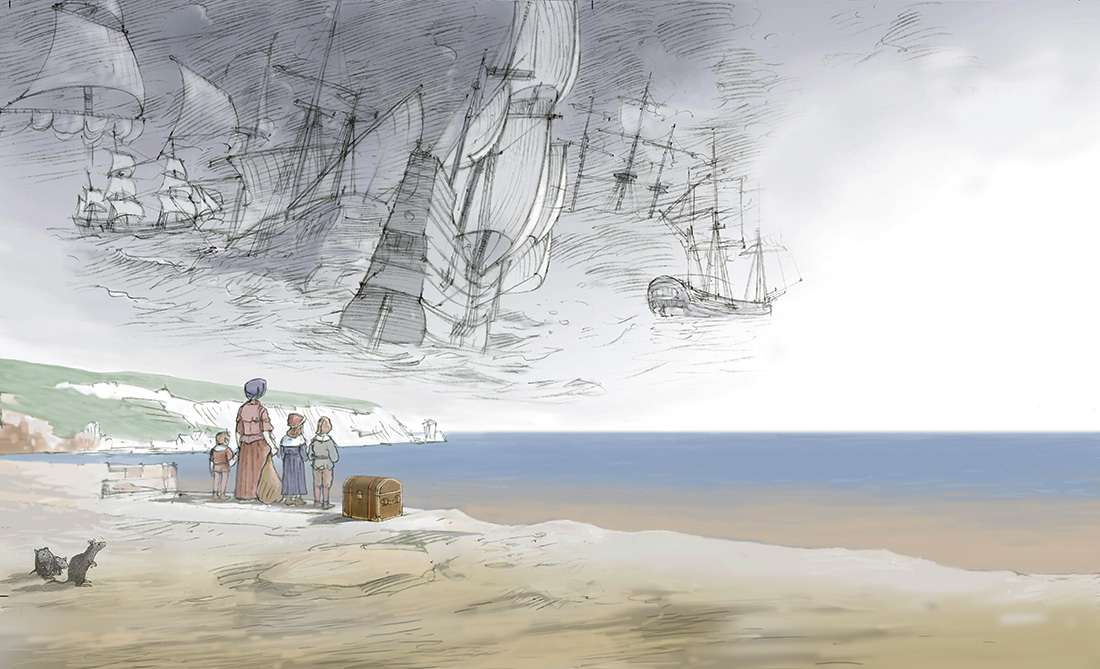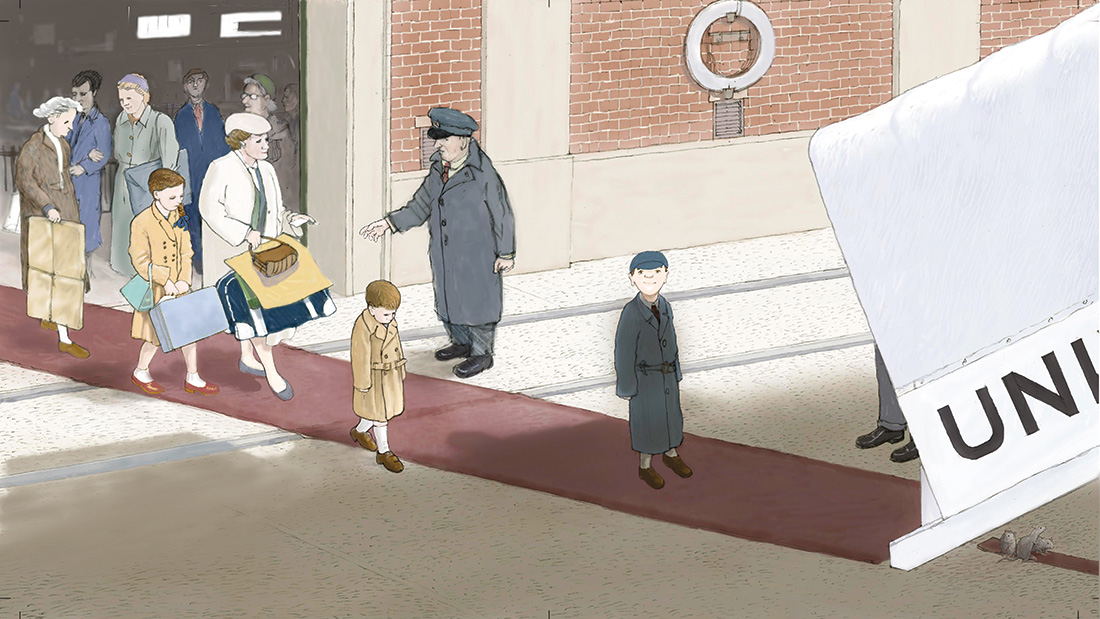
David Macaulay: Crossing on Time
An Exhibition Organized by Norman Rockwell Museum.
(Factsheet at bottom of page)
This exhibition, highlighting the new book Crossing on Time: Steam Engines, Fast Ships, and a Journey to a New World, will incorporate original illustrations, photography and archival materials to showcase both a unique illustration talent as well as an American icon and technological marvel of the sea.

The Artist:
An accomplished draftsman, with an eye toward detail and a mischievous sense of humor, his work melds together large concepts and a sense of personal humanity to culminate in artworks that celebrate technological mastery as well as the individuals who are featured in his works.
In 1957 David Macaulay, along with his mother, younger sister, and brother sailed from Southampton England to New York on the SS United States as immigrants, eventually meeting with his father who had flown over previously to begin a new life in the United States. This initial shipboard experience, at the age of ten, has stayed with Macaulay. His journey across the Atlantic serves as the narrative thread that weaves throughout both the book and the exhibition.
The Technological Leap the SS United States Represented:
The SS United States entered service in 1952, after five years of design and over two years of construction. On her maiden voyage, she became the fastest ship to cross the Atlantic Ocean, averaging 35.5 knots, and shaving off the crossing time by 10 hours. Between 1952 and 1969, the SS United States completed 400 voyages. Even in her retirement, she retains the Blue Riband, the accolade given to the passenger liner crossing the Atlantic Ocean in regular service with the highest speed.

The Master Builder
William Francis Gibbs (August 24, 1886 – September 6, 1967) was the man responsible for bringing the SS United States to life. A dogged proponent of the need for the United States of America to have a ship that would serve as an international flagship the construction of the SS United States was the culmination of a brilliant career as a naval architect and designer.
Gibbs passed away in 1967 as one of the ionic figures in American shipbuilding. The day after Gibbs died in 1967, the SS United States whistled a salute as she passed his Lower Manhattan office at Gibbs & Cox. The ship sailed for another two years before being taken out of service, a casualty of the ascendance of commercial jet aircraft.

Sample Gallery:
Exhibition Video:
Duration:
Eight to twelve week exhibition period
Contents:
Approximately 60 original artworks; photographs; archival documents; personal ephemera; exhibition film; introductory and biographical panels and object/extended identification labels
Insurance:
All risk fine arts, wall to wall
Shipping:
Air ride, Climate controlled
High Security:
All works must be within sight of a trained security officer/staff member at all times during public hours.
Environment:
Light level -18 to 22 foot candles for paintings and 5 to 7 foot candles for works on paper and other light restricted objects; humidity -50% plus or minus 5% and temperature 68 – 72 degrees, no direct sunlight and no direct contact with light fixtures or heating, air conditioning, ventilation, or electrical outlets.
Space:
Approximately 1,200 square feet







